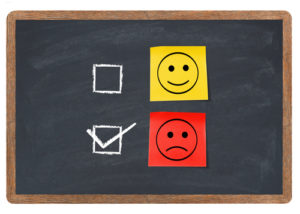Anger and New Mediators

{4 minutes to read} What’s the role of anger in addressing conflict resolution? I was recently at a training for new mediators and coached a group of attorneys working through a role play. These trainings are always interesting in terms of watching others learning a new skill, as a refresher of basics, and getting some new ideas. At one of these trainings about a year ago, a law student trainee came up with a great line, one I have since used on at least one occasion. The comment, made to the two opposing parties in the role play, was, “You guys think you’re miles apart. But you’re not; you’re a football field apart.”
It was a good line because it’s often true. A mediator often sees the kernel of a resolution emerging, but the parties can’t yet see it. Or even more importantly, they can’t feel it.
All mediations are, of course, different, and just because the mediator has a good line or two in their back pocket, doesn’t mean it’s always appropriate to use. Sometimes the parties really are miles apart, and shortening that distance can be a slow and — especially to the parties — frustrating process.
One of the greatest impediments to bridging the gap can be anger. However, getting that anger out can be critical to resolving a dispute. It’s almost always there and usually out in the open early on. One of the strong advantages of mediation over litigation, is that the anger can get expressed, at a minimum to the mediator, and sometimes to the other side as well. In divorce mediations, the anger always comes out when both sides are present, which requires some delicate handling. In non-divorce mediations, the anger may come out when the parties are together, or in separate sessions with the mediator. Either way, the anger is something that needs to come out and be used. Without that, an agreement may not be possible, or you may end up with one that won’t work.
Litigation can take a long time and parties are limited in the direct contact they can have with the other side. This allows anger to simmer and build over time, often in a way that is enormously frustrating, unproductive, and does little to foster resolution. In a mediation, the mediator can use it to draw the parties out.
Now, back to those newbie mediators. What routinely freaks them out most is the expression of anger, and most role plays are set up so at least one side is going to show it. The typical reaction of a new mediator is to say something like, “Whoa, wait a second, let’s hold on here. We don’t want things to get out of hand.” In other words, they criticize the party who expressed the anger. And then they’re stymied.
This is where — as in many aspects of life — experience helps. Sometimes one needs to let the anger sit there a while, and simply acknowledge it. Or you may need to draw it out a bit more, with a simple, “Tell me more about that.” Anger isn’t bad in itself. Sometimes we should be angry. But it can lead to bad things. Or it can lead to greater understanding and help create solutions.
Where have you seen anger used constructively? What are its limits?
Gary Shaffer
Shaffer Mediation
Gary@ShafferMediation.com

